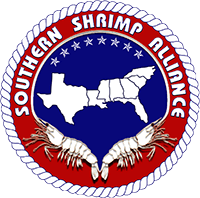On National Shrimp Day, we celebrate America’s favorite seafood! Shrimp is the most consumed seafood in the United States, and consumers have a choice when they indulge in this versatile, tasty crustacean. Ask for U.S. wild-caught shrimp, which are available in many major grocery stores and restaurants nationwide.
Americans prefer shrimp harvested from the Gulf of Mexico and South Atlantic, citing better flavor and texture compared to farm-raised, foreign competitors. Moreover, purchasing local shrimp supports multi-generational family businesses around the Gulf Coast. However, shrimp is deceptively marketed as if it is wild-caught by Americans and many consumers don’t realize the shift that has occurred in the marketplace.
Today, India is the largest supplier of shrimp in the U.S. market producing 56% of peeled shrimp imports and 40.8% of all shrimp imports to the United States. Yet, understanding the source of seafood is important. In March, The Outlaw Ocean Project, Corporate Accountability Lab, and Associated Press each found that to reduce costs, Indian shrimp companies use exploitative labor practices and other deplorable cost-cutting practices, such as the use of child labor, banned antibiotics, and environmental destruction.
“Along the US coastline, shrimp boats are tied up and not working due to the cheap, imported shrimp that have overwhelmed our market,” states Williams. “Consumers have power. They can demand ethically produced seafood. We invite you to enjoy a guilt-free, healthful shrimp and help mom-and-pop businesses here at home by asking for U.S. wild-caught shrimp.”
Shrimping is a traditional way of life and an economic engine across the Southeast of the United States. However, since the rapid expansion of shrimp aquaculture in the 1980s, the U.S. shrimp industry has been losing market share. US taxpayers have even funded the development of foreign shrimp aquaculture competitors through international financial institutions, such as the World Bank. Today, it produces less than 10% of the shrimp consumed in the United States.
“Raising shrimp in ponds is labor-intensive, resource-intensive, and highly risky,” explains John Williams, executive director of the Southern Shrimp Alliance. “When regulated, shrimp aquaculture is expensive. That’s why it isn’t big business locally. Cheap Indian shrimp rely on labor abuses and other unethical practices and never should have found a market in America. American families are suffering. But these recent reports remind us of the pain modern-day slaves endure to make those imports cheap.”
U.S. wild-caught shrimp, thrive in the warm, nutrient-rich waters of the Gulf of Mexico and the South Atlantic, offering a sustainable and flavorful alternative. Unlike their imported counterparts, most of which are raised on feed in confined, chemically-treated ponds and transported long distances, U.S. shrimp are sustainably harvested from their natural habitat in local waters.
